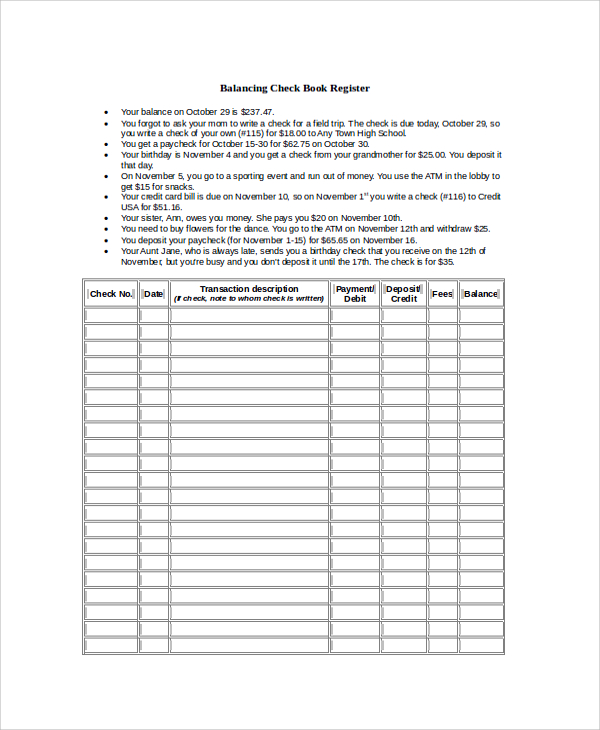


Such transactions include debit card purchases, automatic payments, ACHs, and ATM withdrawals. Step 7: Verify All Other TransactionsĬompare all other transactions listed in your check register to those listed on your monthly statement. If the person or company lost or never received the check, call your bank to stop payment. If an outstanding transaction hasn’t cleared your statement in 60 days, contact the person or company you paid to see if there is an issue. If they have cleared in this statement, check them off on the outstanding transaction list and your current statement. Look through your statement to see if these outstanding items cleared on this statement. Pull out previous statements with uncleared outstanding transactions, such as checks and deposits. Step 6: Check for Previous Months’ Outstanding Items Place a checkmark next to all matching check payments in your check register and bank account statement. Step 5: Verify All Check PaymentsĬompare all check payments in your check register to those on your monthly statement. There may be a space on the back of your statement to note outstanding deposits. Make note of the dates, descriptions, and amounts of any deposits showing in your check register but not on your statement.

Put a checkmark next to all matching transactions in your check register and bank statement. Step 4: Verify All DepositsĬompare all deposits in your check register to those on your monthly statement. If your bank reimburses ATM fees, find these reimbursements on your statement and enter them as deposits in your check register. If your bank charged you any service fees for writing checks, accessing out-of-network ATMs, or any other service, find these charges on your statement and record them in your check register. Step 3: Deduct Any Bank Fees and Add Reimbursements Enter the amount in your check register as you would any other transaction. This interest payment is usually one of the last transactions on the statement. If your checking account is an interest-bearing one, the bank will pay you interest on your balance each time it closes a monthly statement. If you no longer receive paper statements, log on to your online banking system and print out the current statement. Some banks still mail out monthly bank statements around the end of the month, but many have switched to online statements only. It also helps you track when a check clears your bank account. These steps help you keep your checkbook balance up to date so you always know exactly how much money you have in your checking account and there are no unrecognized transactions. Second, it allows you to spot inconsistencies that could be fraud.
#Balancing checkbook how to#
How to Balance a Checkbookīalancing your checkbook in today’s digital world may seem redundant, but it’s critical for two reasons.įirst, balancing your checkbook helps you know exactly how much money you have remaining, including any pending or outstanding checks that haven’t been cashed or deposited yet. You do this by manually recording every transaction, whether it’s a debit card purchase, writing a check, an automated payment, or a deposit. To protect against losing track of your balance and getting hit with an overdraft fee, you need to balance your checkbook - sometimes called a check register. Not all transactions clear immediately, especially if you write a check. With today’s smartphones, we basically carry computers everywhere we go, so checking our checking account balance is as easy as logging onto our bank’s mobile app or online banking website.ĭespite this convenience, the balance you see on your bank’s app may not be accurate.


 0 kommentar(er)
0 kommentar(er)
